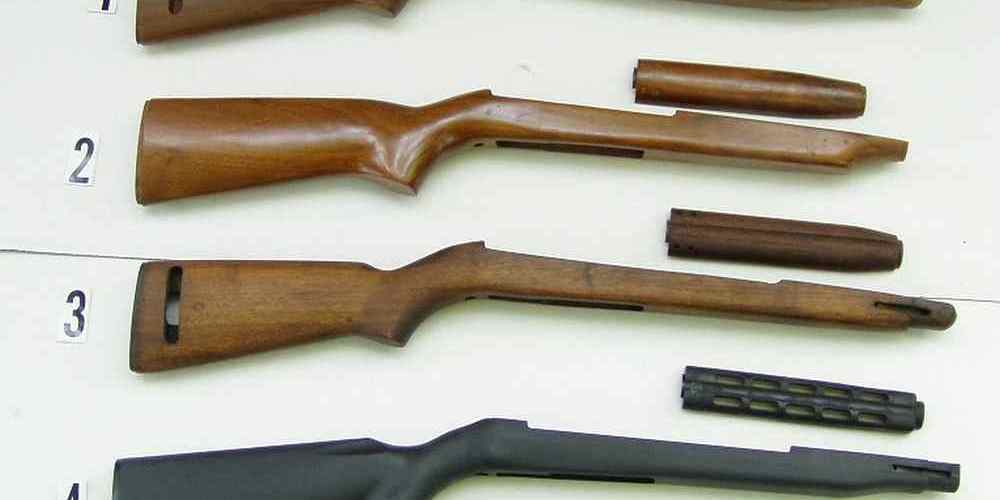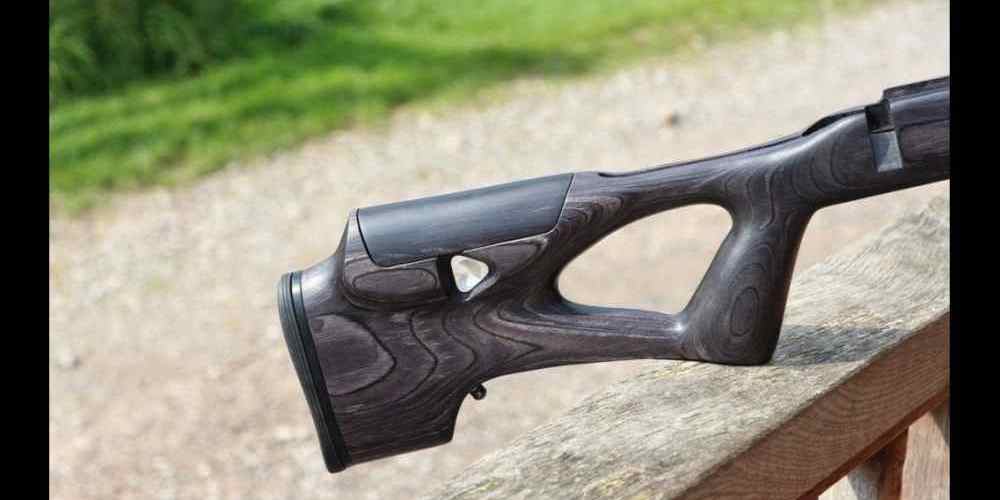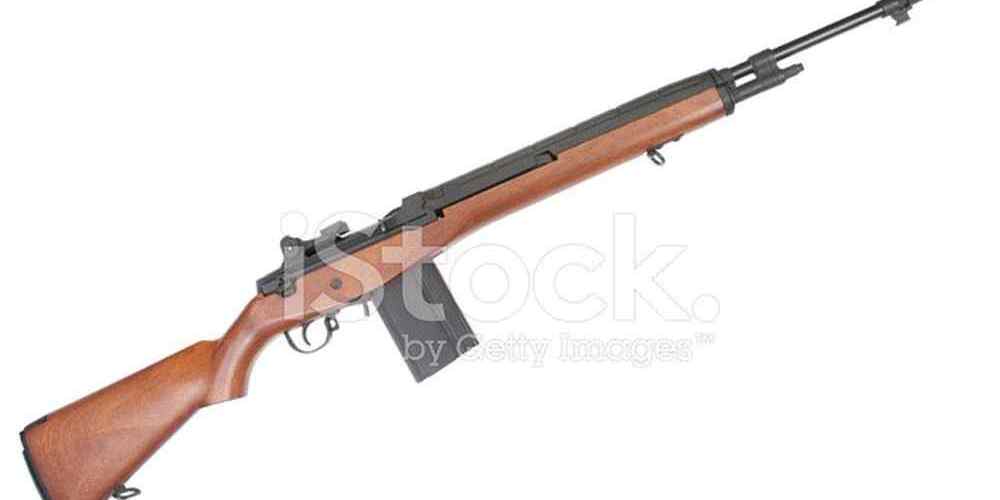“Enhance your precision with our rifle stocks designed for long-range shooting.”
Advantages of Adjustable Rifle Stocks for Long-Range Shooting
When it comes to long-range shooting, stability is key. The slightest movement or vibration can throw off your shot, resulting in missed targets and frustration. That’s why many shooters turn to adjustable rifle stocks to help maximize stability and improve their accuracy.
One of the main advantages of adjustable rifle stocks is the ability to customize the fit of your rifle to your body. This not only ensures a comfortable shooting experience but also helps to reduce fatigue during long shooting sessions. By adjusting the length of pull, cheek rest height, and butt pad position, you can create a more ergonomic shooting position that allows for better control and consistency.
Another advantage of adjustable rifle stocks is the ability to fine-tune your rifle’s balance and weight distribution. By adding or removing weight from the stock, you can adjust the rifle’s center of gravity to suit your shooting style and preferences. This can help to reduce muzzle rise and felt recoil, making it easier to stay on target and follow up shots quickly.
Adjustable rifle stocks also offer the flexibility to switch between shooting positions with ease. Whether you prefer shooting prone, kneeling, or standing, an adjustable stock can be quickly adjusted to accommodate different shooting angles and positions. This versatility can be especially useful in competitive shooting or hunting situations where you may need to quickly adapt to changing conditions.
In addition to improving stability and comfort, adjustable rifle stocks can also help to improve accuracy. By providing a more consistent and repeatable shooting platform, adjustable stocks can help to minimize shooter-induced errors and improve shot placement. This can be especially important when shooting at long distances where even small deviations can have a significant impact on accuracy.
Overall, adjustable rifle stocks offer a range of benefits for long-range shooting enthusiasts. From improved stability and comfort to enhanced accuracy and versatility, adjustable stocks can help to take your shooting to the next level. Whether you’re a competitive shooter looking for an edge or a hunter seeking to improve your accuracy in the field, an adjustable rifle stock can be a valuable addition to your shooting setup.
So if you’re looking to maximize stability and improve your long-range shooting performance, consider investing in an adjustable rifle stock. With the ability to customize fit, balance, and shooting position, an adjustable stock can help you achieve greater consistency and accuracy on the range or in the field. Give yourself the edge you need to hit your targets with confidence and precision.
Importance of Proper Length of Pull in Rifle Stocks
When it comes to long-range shooting, stability is key. One of the most important factors in achieving stability is having the proper length of pull in your rifle stock. The length of pull refers to the distance from the trigger to the butt of the rifle stock, and it plays a crucial role in ensuring that you can shoulder your rifle comfortably and maintain proper shooting form.

Having the correct length of pull is essential for maximizing accuracy and minimizing recoil. If your rifle stock is too short, you may find yourself hunching over or straining to reach the trigger, which can throw off your aim and make it difficult to maintain a steady shooting position. On the other hand, if your rifle stock is too long, you may struggle to properly shoulder the rifle, leading to poor shooting form and decreased accuracy.
To determine the correct length of pull for your rifle stock, you should consider your body size and shooting style. Taller shooters may require a longer length of pull, while shorter shooters may need a shorter length of pull. Additionally, shooters who prefer a more upright shooting position may benefit from a longer length of pull, while those who prefer a more aggressive shooting stance may find a shorter length of pull more comfortable.
In addition to body size and shooting style, the type of shooting you plan to do can also influence the ideal length of pull for your rifle stock. For long-range shooting, where precision and stability are paramount, a longer length of pull may be preferable. This can help you maintain a more consistent shooting position and absorb recoil more effectively, resulting in improved accuracy at longer distances.
When selecting a rifle stock for long-range shooting, it’s important to choose one that allows for easy adjustment of the length of pull. This will allow you to fine-tune the fit of your rifle stock to your individual preferences and shooting style, ensuring maximum comfort and stability while shooting. Many modern rifle stocks come with adjustable length of pull features, such as spacers or adjustable butt plates, that make it easy to customize the fit of your rifle stock to your liking.
In conclusion, the proper length of pull in your rifle stock is crucial for maximizing stability and accuracy in long-range shooting. By ensuring that your rifle stock fits you properly and allows for easy adjustment of the length of pull, you can improve your shooting form, reduce recoil, and ultimately achieve better results on the range. So, next time you’re shopping for a rifle stock, be sure to consider the importance of proper length of pull and choose a stock that will help you reach your full shooting potential.
Choosing the Right Material for Long-Range Shooting Rifle Stocks
When it comes to long-range shooting, stability is key. A stable rifle stock can make all the difference in hitting your target accurately and consistently. There are many factors to consider when choosing a rifle stock for long-range shooting, but one of the most important is the material it is made from. The material of the stock can greatly affect its stability, weight, and overall performance.
One of the most common materials used for rifle stocks is wood. Wood stocks are known for their classic look and feel, but they may not always be the best choice for long-range shooting. Wood stocks can be heavy, which can affect the balance of the rifle and make it more difficult to hold steady for long periods of time. Additionally, wood stocks can be affected by changes in temperature and humidity, which can cause them to warp or swell, affecting the accuracy of your shots.
Another popular material for rifle stocks is synthetic or composite materials. These stocks are often lighter than wood stocks, which can make them easier to handle for long-range shooting. Synthetic stocks are also more resistant to changes in temperature and humidity, making them a more stable option for shooting in varying conditions. Additionally, synthetic stocks are often more durable than wood stocks, making them a good choice for shooters who put their rifles through tough conditions.
For those looking for the ultimate in stability, there are also aluminum or carbon fiber rifle stocks available. These materials are extremely lightweight and rigid, providing maximum stability for long-range shooting. Aluminum and carbon fiber stocks are also highly resistant to changes in temperature and humidity, making them a top choice for shooters who need consistent performance in any environment. While these stocks may be more expensive than wood or synthetic options, the stability and durability they provide can make them well worth the investment for serious long-range shooters.
When choosing a rifle stock for long-range shooting, it is important to consider not only the material it is made from, but also the design and features of the stock. Look for stocks with adjustable length of pull and cheek risers, as these features can help you customize the fit of the stock to your body and shooting style. Additionally, consider the overall weight and balance of the stock, as a well-balanced rifle can help you hold steady and make accurate shots over long distances.
In conclusion, choosing the right material for your rifle stock is crucial for maximizing stability in long-range shooting. Consider the pros and cons of wood, synthetic, aluminum, and carbon fiber stocks, and choose the material that best fits your needs and shooting style. Remember to also consider the design and features of the stock, as these can greatly affect your comfort and accuracy while shooting. With the right rifle stock, you can improve your long-range shooting performance and hit your targets with precision every time.
Customizing Rifle Stocks for Optimal Stability and Comfort
When it comes to long-range shooting, stability is key. A stable rifle stock can make all the difference in accuracy and precision. Customizing your rifle stock for optimal stability and comfort can greatly enhance your shooting experience.
One of the most important factors to consider when customizing your rifle stock is the material. Wood, fiberglass, and synthetic materials are all popular choices for rifle stocks. Each material has its own advantages and disadvantages, so it’s important to choose one that best suits your needs.
Wood stocks are known for their classic look and feel, but they can be heavy and prone to warping. Fiberglass stocks are lightweight and durable, but they can be expensive. Synthetic stocks are affordable and weather-resistant, making them a popular choice for many shooters.
In addition to choosing the right material, it’s also important to consider the shape and design of your rifle stock. A well-designed stock can provide better ergonomics and improve your shooting accuracy. Adjustable cheek rests and butt pads can help you find the perfect fit for your body, while a contoured grip can improve your control over the rifle.
Another important factor to consider when customizing your rifle stock is the length of pull. The length of pull refers to the distance between the trigger and the butt of the rifle stock. A proper length of pull can improve your shooting comfort and accuracy, while an improper length of pull can lead to poor shooting form and reduced accuracy.
When customizing your rifle stock, it’s also important to consider the weight distribution of the rifle. A well-balanced rifle can help reduce recoil and improve your shooting stability. Adding weight to the front or rear of the rifle stock can help you find the perfect balance for your shooting style.
In addition to customizing your rifle stock for stability, it’s also important to consider your shooting environment. Shooting from a bench rest requires a different stock setup than shooting from a prone position. By customizing your rifle stock to suit your shooting style and environment, you can maximize your stability and accuracy.
Overall, customizing your rifle stock for optimal stability and comfort can greatly enhance your shooting experience. By choosing the right material, shape, and design for your rifle stock, you can improve your shooting accuracy and precision. Whether you’re a competitive shooter or a recreational hunter, a stable rifle stock can make all the difference in your shooting performance. So take the time to customize your rifle stock and maximize your stability on the range.
How Recoil Reduction Systems in Rifle Stocks Improve Long-Range Accuracy
When it comes to long-range shooting, stability is key. A stable shooting platform allows for greater accuracy and precision, especially when shooting at distances of 500 yards or more. One way to maximize stability in long-range shooting is by using a rifle stock with a recoil reduction system.
Recoil reduction systems are designed to absorb and dissipate the energy generated by the recoil of a rifle when fired. This helps to reduce the amount of felt recoil experienced by the shooter, which in turn helps to minimize muzzle rise and improve overall shooting accuracy. By reducing the amount of recoil, shooters are able to stay on target more effectively, resulting in more consistent and accurate shots.
There are several different types of recoil reduction systems available for rifle stocks, each with its own unique benefits and features. One common type of recoil reduction system is the hydraulic buffer system, which uses hydraulic fluid to absorb and dissipate recoil energy. This system is often adjustable, allowing shooters to customize the amount of recoil reduction to suit their individual preferences.
Another popular recoil reduction system is the spring-loaded system, which uses a set of springs to absorb and dampen recoil energy. This system is often more compact and lightweight than hydraulic systems, making it a popular choice for shooters who prioritize portability and ease of use.
In addition to reducing felt recoil, recoil reduction systems in rifle stocks can also help to improve shooting comfort and reduce fatigue. By absorbing the energy generated by recoil, these systems help to minimize the amount of shock and vibration transferred to the shooter’s shoulder, resulting in a more comfortable shooting experience. This can be especially beneficial for shooters who spend long hours at the range or participate in competitive shooting events.
Furthermore, recoil reduction systems can also help to improve shooting consistency and accuracy. By minimizing muzzle rise and keeping the rifle on target, these systems help shooters to maintain a steady and controlled shooting position, resulting in more accurate and precise shots. This can be particularly important when shooting at long distances, where even small deviations in aim can have a significant impact on shot placement.
Overall, recoil reduction systems in rifle stocks are a valuable tool for shooters looking to maximize stability and accuracy in long-range shooting. By reducing felt recoil, improving shooting comfort, and enhancing shooting consistency, these systems help shooters to achieve their full potential on the range or in the field. Whether you are a competitive shooter, a hunting enthusiast, or simply enjoy long-range shooting as a hobby, investing in a rifle stock with a recoil reduction system can help take your shooting skills to the next level.






